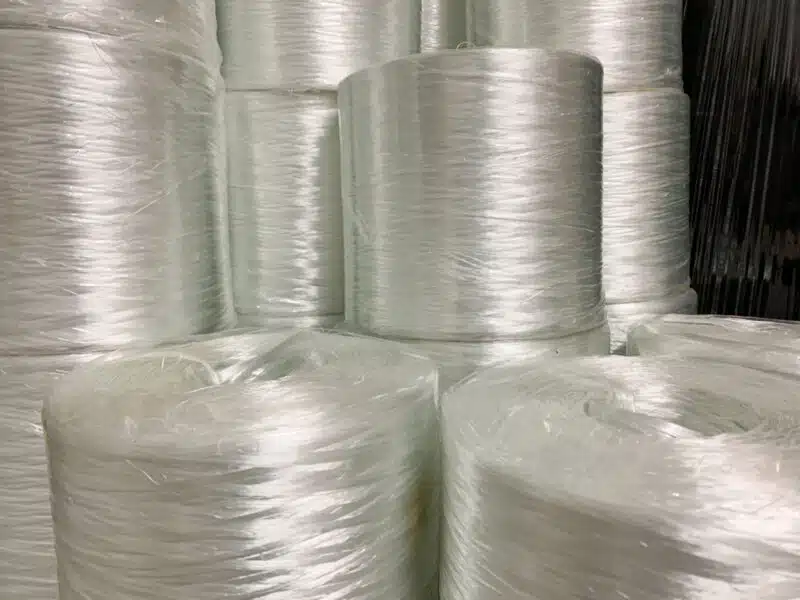How to Remove Fiberglass from Your Skin?

Navigating Fiberglass Exposure: Precautions, Treatment, and Health Considerations
15th May, 2023
Fiberglass is a composite material that combines plastic with glass fibers for reinforcement. The glass fibers can be randomly arranged or woven into a cloth, adding strength.
One of the critical reasons for the popularity of fiberglass is its versatility, as it offers flexibility, wide availability, and remarkable strength.

Fiberglass is known to be stronger and more durable than many metals. Additionally, it possesses favorable characteristics such as resistance to weather conditions, lightweight nature, non-reactivity, non-conductivity, and ease of molding into various shapes and sizes.
How Can Fiberglass Fibers Be Removed From the Skin?
The Agency for Toxic Substances & Disease Registry states that when fiber glass comes into contact with your skin, it is unlikely that a significant amount will enter your body.
Nevertheless, it is crucial to eliminate fiber glass from your skin promptly. This immediate removal can prevent skin irritation and reduce the risk of it entering your body through your eyes, nose, or throat.
To effectively remove fiberglass from your skin, follow these steps:
- Rinse the affected area with mild soap and warm water without delay.
- Gently wipe the exposed area with a washcloth to remove any embedded fibers from the skin.
- If you notice fibers sticking out of your skin, carefully apply tape to the area and then delicately remove the tape. The fibers will adhere to the tape and pull your skin out.
By following these guidelines, you can ensure the proper removal of fiber glass from your skin and minimize any potential discomfort or health risks.
Avoid These Actions:
- Refrain from scratching or rubbing the areas of your skin that have come into contact with fiber glass. Doing so may inadvertently push the fibers further into your skin, causing more irritation and potential health risks.
- Do not attempt to remove the fibers from your skin using compressed air. This method can lead to the dispersal of fibers in the air, increasing the risk of inhalation and further exposure.
It’s important to note that these actions should be avoided as they can worsen the situation and potentially lead to adverse effects. Instead, follow the earlier steps for proper fiber glass removal from the skin. By taking the appropriate measures, you can effectively minimize any potential harm or discomfort associated with fiber glass contact.
Managing Fiberglass-Induced Skin Contact
Fiber glass-induced skin contact can lead to irritant contact dermatitis, commonly known as fiber glass itch. If you experience persistent irritation, it is advisable to seek medical attention.
Upon consultation with a healthcare professional, if they diagnose you with contact dermatitis resulting from fibe rglass exposure, they might suggest applying a topical steroid cream or ointment.
The recommended frequency for application is typically once or twice a day until the inflammation subsides. It’s crucial to follow your doctor’s instructions for proper and safe usage of the prescribed medication.
Remember, seeking medical advice is essential to address any potential complications or prolonged symptoms associated with fiber glass-related skin irritation.
Are There Any Potential Risks Associated With Fiberglass Exposure?
According to information from the Illinois Department of Public Health (IDPH), coming into contact with fiberglass is not known to cause long-term health effects.
However, in the short term, exposure to fiberglass can lead to the following effects:
- Eye irritation
- Soreness in the nose and throat
- Irritation in the stomach
Furthermore, fiberglass exposure may exacerbate chronic skin and respiratory conditions, such as bronchitis and asthma.
What About the Risk of Cancer?
In 2001, the International Agency for Research on Cancer revised its classification of glass wool (a type of fiber glass) from “possibly carcinogenic to humans” to “not classifiable as to its carcinogenicity to humans.”
According to the Washington State Department of Health, the occurrence of lung disease-related deaths, including lung cancer, among workers involved in glass wool manufacturing is not consistently higher than that of the general population in the United States.
While fiberglass exposure may cause short-term irritations and can aggravate certain existing conditions, the evidence regarding its direct link to long-term health risks or cancer is inconclusive.
To minimize potential risks, staying informed about safety guidelines and following proper precautions when dealing with fiberglass is essential.
Recommended:
How to Spot Skin Cancer?
What Are the Typical Applications of Fiberglass?
Fiberglass finds widespread use primarily in insulation, serving various purposes such as:
- Insulating homes and buildings
- Providing electrical insulation
- Acting as insulation for plumbing systems
- Enhancing acoustic insulation
- Insulating ventilation ducts
In addition to insulation, fiber glass is utilized in various other products and industries, including:
- Furnace filters
- Roofing materials
- Ceilings and ceiling tiles
These applications demonstrate the versatility and utility of fibe glass across different sectors, highlighting its significance in insulation and other related fields.
Minimize Your Fiberglass Exposure Risk
Fiber glass can be found in roofing, insulation, and heating materials, particularly in older buildings. If you’re engaged in a construction project and experience itching or skin irritation, it could indicate exposure to fiber glass dust.
To reduce the chances of fiber glass exposure at a worksite, consider the following precautions:
- Cover your skin with loose-fitting clothing that provides full coverage. Always wear gloves, closed-toe shoes, eye goggles, and masks when working near fiber glass materials.
- Enhance airflow by keeping doors and windows open, reducing exposure to significant amounts of fiberglass dust.
- Ensure you wash your hands thoroughly before eating, drinking, or smoking. Avoid keeping food or beverages in the same area as fiberglass dust.
- Wash the clothes you wore on the job site immediately after exposure. It is essential to launder work clothes separately from other garments to prevent the spread of fiber glass particles. After washing your work clothes, clean your washing machine thoroughly.
- Dampen the floors and use a vacuum with a HEPA filter to remove fiberglass dust. Never attempt to dry sweep fiberglass dust.
Implementing these measures can effectively minimize the risk of fiberglass exposure and promote a safer working environment.
FAQs
What will draw fiber glass out of your skin?
Use adhesive tape or a mixture of baking soda and water to draw fiberglass out of your skin.
Does fiberglass in skin go away?
Fiberglass particles can be removed from the skin, and the irritation should subside over time.
What is the best way to get fiber glass insulation out of your skin?
Use adhesive tape to gently lift fiberglass particles from the skin and wash the area with soap and water.
Does vinegar remove fiber glass from skin?
Vinegar is not recommended for removing fiberglass from the skin. Tape or baking soda mixture works better.
How to Remove Fiber glass from Skin
Use adhesive tape to lift particles, wash with soap and water, and apply a baking soda mixture if needed for removal.
The Bottom Line
If you come into contact with fiberglass, promptly remove it from your skin following the recommended steps. Additionally, avoid scratching or rubbing the affected areas and refrain from using compressed air for fiber removal. If you experience persistent irritation or irritant contact dermatitis symptoms, seeking medical attention is crucial.
A healthcare professional can accurately diagnose and recommend suitable treatments, such as topical steroid creams or ointments.
Remember, the health and well-being of individuals should always be a top priority. By understanding the risks associated with fiberglass exposure and taking necessary precautions, you can mitigate potential harm and ensure a safe environment.
Stay informed, follow best practices, and prioritize your health when working with fiberglass. You can confidently handle fiberglass materials with proper knowledge and care while minimizing associated risks.
Recommended:
What is Skin Crawling (Fornication) and How to Stop it?















